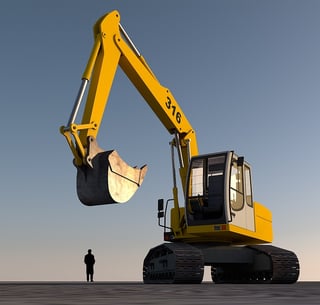 One of the most amazing things about Lean manufacturing principles is how universal they are. Lean - a management philosophy derived mostly from the Toyota Production System (a method for the elimination of waste within a manufacturing system) is equally effective when applied to manufacturing, healthcare, government, or even construction, among others.
One of the most amazing things about Lean manufacturing principles is how universal they are. Lean - a management philosophy derived mostly from the Toyota Production System (a method for the elimination of waste within a manufacturing system) is equally effective when applied to manufacturing, healthcare, government, or even construction, among others.
Of course, the application of Lean is at various stages in different fields. While Lean, having been created in the automotive industry, has long been applied in manufacturing, it is a relatively new concept in the construction industry.
Those who have been working in and around construction for quite some time will know the construction industry has suffered deeply from a lack of innovation and systems improvement for as long as most can remember.
Listen to this Post or Subscribe to the Podcast:
A 2013 research article from the Alexandra Engineering Journal, Applying lean thinking in construction and performance improvement, found the construction industry is troubled with delay and often suffers cost and time overrun. The report states that the productivity of the construction industry worldwide has been declining over the past 40 years.
Here in the United States, The Lean Construction Institute (LCI), a membership organization founded in 1997 to improve the Construction and Design industries through Lean approaches to project design and delivery, reports the construction industry has been falling behind at an alarming rate.
According to the LCI, “Construction labor efficiency and productivity has decreased, while all other non-farming labor efficiency has doubled or more since the 1960s. Currently, 70% of projects are over budget and delivered late. The industry still sees about 800 deaths and thousands of injuries per year. The industry is broken.”
The Lean Construction Blog reported that “In 2014, 874 fatal work-related injuries were reported in the U.S. construction industry. Even though construction workers historically account for only about 5% of the overall U.S. workforce, the construction industry accounts for approximately 20% of the total occupational fatal and non-fatal injuries.”
The article went on to reference the statistic that 42% of 224 fatalities between 1990 and 2003 in the U.S. construction industry were linked to decisions made before construction began, during the design process.
This need is clearly felt by those working in the industry itself, but those unfamiliar with Lean and the ways in which it can transform, streamline, and improve an organization, may be wondering if Lean is the right answer. Thankfully, though Lean is still new to the industry, there are already many in the industry around the world sharing successes with Lean, not only in design but in procurement, production planning, logistics, and construction as well.
The Construction Lean Improvement Programme (CLIP) was created in 2003 to help the UK construction industry, inspired government reports pointing out the under-achievement of the industry, to improve its financial performance, provide a better product and service to its customers, and cope with a skills shortage.
The first phase of CLIP focused on seven different construction projects, bringing to them simple Lean principles. The goal was to measure improvements and best practices. Each project had unique circumstances, and Lean construction was applied in different ways to each project.
Case studies of these projects are detailed in the Constructing Excellence publication CONSTRUCTION LEAN IMPROVEMENT PROGRAMME: Profit from process improvement. The projects included:
- A mechanical and electrical (M&E) contractor used Lean thinking make cost savings by improving the productivity of their workforce
- A building contractor used Lean thinking to improve their partnership framework and reduce pre-construction lead times
- A general contractor used Lean thinking to reduce property refurbishment times and improve their partnering relationships
- A shop-fitting contractor used Lean thinking to improve their productivity and product offering to clients, making them more competitive in the market
- A specialist contractor used Lean thinking to reduce defects in newly refurbished local authority housing properties and to improve customer service levels
- A regional contractor used Lean thinking to improve the productivity of their bricklaying team
- A civil engineering and building contractor used Lean thinking to improve their knowledge base and internal processes, to add value and bring cost savings to their client’s buildings
According to Constructing Excellence, “The results of the seven pilot projects based on real construction projects around the UK have been excellent, with most achieving productivity improvements of up to 50% in key processes.”
Though this pilot program took place in the UK, there are singular studies and reports of success with Lean in the United States beginning to emerge as well. Here at KaiNexus, our team works with a number of organizations in and around the construction industry, like BSA LifeStructures and JC Cannistraro. So far, we have seen these types of organizations make great strides in implementing continuous improvement, with the right tools.
If you are in the construction industry and have questions about implementing Lean or continuous improvement software into your business, please contact us with your questions.



Add a Comment